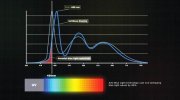How New Flicker Recommendations Will Influence LED Lighting Design
By Steven Keeping
Contributed By Electronic Products
2016-01-05
Research has shown that flicker––a variation of luminance over time––from lighting occurring in a certain frequency range can be detrimental to health. While the problem was addressed for incandescent and fluorescent lighting, it has reappeared as a challenge for design engineers since the introduction of LEDs for mainstream illumination.
But now, after extensive investigation, the U.S.-based Institute of Electrical and Electronics Engineers (IEEE) has published recommended practice for eliminating perceptible flicker in LED lighting. Entitled “Recommended Practice for Modulating Current in High-Brightness LEDs for Mitigating Health Risks to Viewers,” IEEE Std. 1789-2015 explains what’s known about flicker in LED lighting and provides guidance that can help manufacturers design products that minimize possible flicker-associated health and productivity effects.
The primary source of flicker in an LED-based product is the power supply or “LED driver.” LED-based products with well-designed drivers can deliver light with minimal flicker, but doing so can increase the cost and/or size of the driver circuitry. For example, smaller products such as MR16 replacement lamps are more susceptible to flicker due to size limitations on the driver.
This article takes a look at why flicker should be controlled, describes the IEEE recommendations and considers a selection of contemporary drivers that could be employed as the basis of a flicker-free power supply.
(...)
Why is flicker a problem?
Flicker from light sources is typically very subtle: it normally does not lead to a noticeable sensation in the human observer even though the brain does perceive the light variation. Consequently, many people who suffer from flicker sensitivity may not be aware that lighting is the reason for their malaise. To make things even more difficult, humans are not all equally sensitive to the effects of flicker. Those that are more sensitive include children and people who suffer from migraines, autism, or epilepsy.
Flicker from lighting is at best annoying and at worst detrimental to health. Flicker can cause eyestrain, blurred vision, and impairment of performance during sight-related tasks. For 10 percent of the population flicker triggers migraines, and other groups are prone to debilitating effects.
These effects first came to the attention of lighting engineers when mains-powered fluorescent tubes replaced incandescent lights. During the 1970s and 1980s it was discovered that while barely imperceptible, flicker in the 70 to 150 Hz range did cause productivity losses and health effects. The low-frequency, magnetic ballast that were needed to limit the current during the tube’s operation caused the flicker. By moving to high-frequency ballast manufacturers eliminated the problem by shifting any flicker to a frequency range beyond that perceptible to humans.
However, as LEDs penetrated mainstream lighting applications the problem of flicker returned. There are two factors of solid-state lighting technology that can make the problem particularly acute: the marked sensitivity to variations in driver current (described above) and a lack of “persistence” when the drive current drops.
Persistence is a measure of how quickly the light output from a source fades when the current drops. Highly persistent sources such as incandescent lights continue to emit a relatively large amount of light between voltage peaks, effectively “bridging the gap” and lowering the percentage flicker. Fluorescent tubes, while not as good as incandescent lights, also exhibit high persistence. In comparison, LEDs exhibit virtually no persistence, instantly darkening once the current drops. This is true for both red, green, blue (RGB) LED combinations and white LEDs which combine a blue LED with an yttrium aluminum garnet (YAG) phosphor.
The insidious effects of imperceptible flickering in the 70 to 150 Hz range are not just a function of frequency; physical and physiological factors also play a big part. For example, bright light is worse than dim, and the difference between “bright” and “dark” parts of the lighting pattern are important (a light that goes completely dark during the “off” part of the cycle––for example, a poorly-persistent LED––is worse than one which only partially dims); and the position of the light source on the retina is important, as light sensed by the center is worse than that falling on the periphery.
(...)
Flicker in the spotlight
As LED lighting makes significant inroads into the mainstream lighting market, the health effects of flicker are likely to receive greater consumer attention. By adhering to the recommendation issued in IEEE Std. 1789-2015, lighting designers can ensure that their products are demonstrably non-detrimental to health. Meeting the recommendation might add some cost to the end product because it will require sourcing a well-designed LED driver, but it has been shown that the consumers are prepared to pay more to safeguard health.
http://www.digikey.com/en/articles/techzone/2016/jan/how-new-flicker-recommendations-will-influence-led-lighting-design


